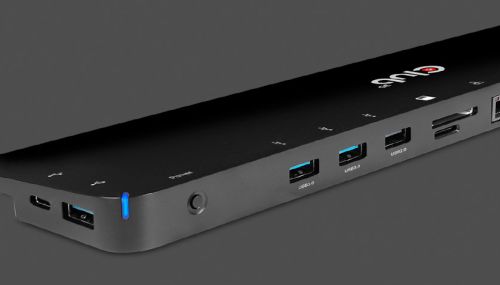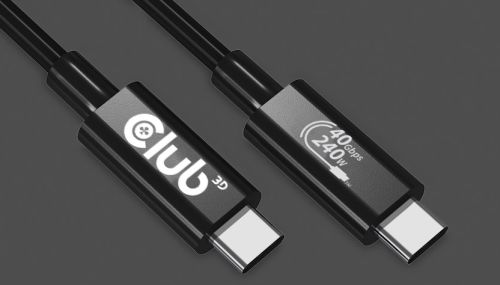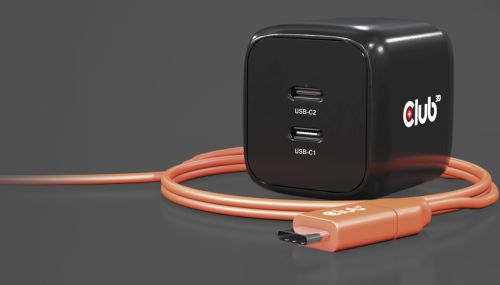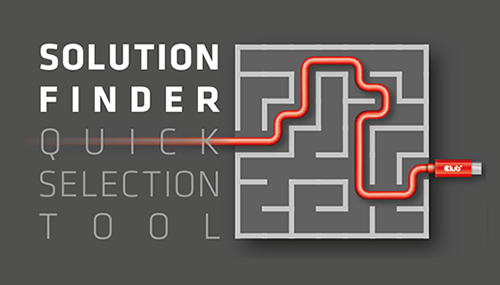Power Delivery and PPS
There’s a good chance that most of your electronic gadgets charge from USB, but it wasn’t initiallydesigned to provide much power. USB Power Delivery (PD) changed this in a majorway, making power-hungry devices on USB a possibility.
Standard USB Power Is a Little Weak
Standard USB power specifications don’t offer much in the way of power.There are various USB power standards that devices can call on. Which ones areavailable depends on what type of USB standard the controller, cable, anddevice all support. For example, USB 3.2 Gen x2 offers at most 7.5W while USB3.0 offers 4.5W.
There are special battery chargingstandards over USB that can pump up to 25W of power into a device and standardUSB-C can deliver up to 15W of power, assuming that the charger can provide 3Aof current.
Why are USB power standards solimited? The answer is somewhat complicated, but the common denominator here isthat all of these standards, even the latest USB-C standard, operate at a mere5V. Since the total wattage that can be delivered is a product of voltage andcurrent, the only way to give more watts at 5V is to increase current. However,as the Amps go up you’ll run intovarious issues such as needing thicker wiring and of course, the level ofcurrent can quickly become dangerous.
USB Battery Charging (BC) 2 offers themost watts at 5V and 5A, totaling 25W. Fast-charging smartphones, tablets, andmodern laptops can easily meet and exceed that number. Quite a few proprietaryUSB fast-charging methods have been developed to address this, and USB PDexists as a way to accommodate these growing power needs in anindustry-standard way.
Power Delivery (PD) is a standard forhandling higher power that was introduced by the USB Implementers Forum. Itallows devices to charge fast over a USB connection. It provides high-speedcharging with variable voltage using intelligent device negotiation. Devicesnegotiate a power contract to determine how much power they can pull from a PDcharger.
PPS is the latest addition to the PD3.0 standard. PPS and PD protocols work seamlessly together. PPS allows forrenegotiation of non-standard currents and voltages between the charger and thedevice, feeding it with maximum power.
Quick Charge (QC) is one of the mostcommon fast charging protocols on the market and is found in many popularsmartphones. It was invented by Qualcomm, which makes mobile CPUs. The chargingstandard supports backward compatibility, which means a QC 4+ charger canfast-charge a QC 3.0 device. Quick Charge achieves fast charging by increasingthe charging voltage, boosting the wattage in the process. QC 5, the lateststandard in Quick Charge technology, can recharge smartphones to 50% in fiveminutes.
What’s the Difference Between PPS, PD, and QC?
Programmable Power Supply PPS allowsfor stepwise changes in current and voltage. It decreases the conversion lossduring charging, ensuring the charge is more efficient. When the charge is moreefficient, less heat is produced, and when less heat is produced, a battery’s lifespan increases. So, PPS fastcharging is better for your device’s battery.
USB Power Delivery Adds The Volts
The first version of USB PowerDelivery running over Micro-USB offered 60W at 3A, which means that it’s also pushing 20V. That’s four times as much as the base-levelUSB standard. PD 1.0 on USB Type-A/B upped this to 5A, offering 100W of power.
USB-C Power Delivery comes in twopower levels. PD 2.0 and 3.0 over USB-C have the same 100W power rating as PD1.0 over Type-A/B connectors. Power Delivery 3.1, however, offers a whopping240W of power by pushing the voltage up.
USB PD never exceeds 5A of current,but the voltage can be dynamically configured to meet the needs of a device upto the maximum power limit for the standard.
The Device Handshake
When a USB PD charger connects to adevice, it performs a “handshake” asking the device how much power it needs. USB PDsupports seven voltage levels at 5V, 9V, 15V, 20V, 28V, 36V, and 48V.
In the latest revision of USB PD, adevice can ask for an intermediate voltage starting at 15V. If there aremultiple peripherals connected to a USB PD power source, then each device onlygets the amount of power it needs. When a device needs more power, it gets itfor the duration of that need and then drops back to the lower level of poweruse. It allows devices to charge fast over a USB connection. It provideshigh-speed charging with variable voltage using intelligent device negotiation.Devices negotiate a power contract to determine how much power they can pullfrom a PD charger.
Can PPS Charge Laptops?
Yes, many laptops support the PPScharging protocol and can be charged faster, safely, and more efficiently.
The Cable Matters
While often overlooked, the cable thatsits between your device and the USB PD charger is a crucial component. Powercan only flow at a rate the cable can handle. The USB PD standard has strictsafety limits to prevent cables from overheating with possibly catastrophicresults.
In other words, you can only get aparticular level of power such as 100W or 240W if the cable you’re using supports it. This will usuallybe indicated in the cable’sspecifications, but in practice, the charger and device will negotiate thefastest power rate that the weakest link in the chain can handle. Whether it’s the charger, cable, or device.
Be Wary of Uncertified Products
In order for a device such as acharger to claim that it’s a USB PDproduct, it must comply with USB PD specifications. This means that the devicewill display the USB Implementer Forum’s compliance logos and TID numbers.
It is worth doing a little research beforeyou buy a USB-C device, avoiding device damages !
In other words, make sure you buy agood, high-quality cable like our Club 3D Certified 240W cables.

:)

Please refer to a full overview of our Legacy Terms and Conditions on www.club-3d.com.

 Deutsch
Deutsch Español
Español Türk
Türk










